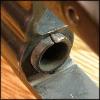RugerOldArmy
Member
All my handguns have been C&B Revolvers or Semis, until yesterday.
I don't know much about about revolvers, but always liked S&W 19(s), 29(s), and Colt Pythons. (They just seem to have ideal ergonomics for me, the Python, perhaps being a tad nose-heavy.)
Yesterday, I spotted a S&W 19-2, 6" barrel, that looked like it had never been shot. ($495). It seemed a great value to me. This is the old-style smith, with the firing pin on the hammer.
A few questions on the S&W 19-2:
- How old is this model? Guessing from the potentially fiction Wikipedia page, it looks like this was made between 1963 and 1966? (Looks brand new).
- It is my understanding that these are medium-light frames (what '?'-Frame letter?), and I should shoot more .38 Special loads than .357(s)? No steady diet of .357?
- Is it OK to dry fire?
- I know they made a lot of these, but was this a good deal? (a 4" one would be nice too!)
- Opinion: I've got to reload for a new cartridge regardless. Would you gear up for .38 Special or .357 Mag? (I've got 1911(s) for a defensive gun. This is intended for the range.)
I don't know much about about revolvers, but always liked S&W 19(s), 29(s), and Colt Pythons. (They just seem to have ideal ergonomics for me, the Python, perhaps being a tad nose-heavy.)
Yesterday, I spotted a S&W 19-2, 6" barrel, that looked like it had never been shot. ($495). It seemed a great value to me. This is the old-style smith, with the firing pin on the hammer.
A few questions on the S&W 19-2:
- How old is this model? Guessing from the potentially fiction Wikipedia page, it looks like this was made between 1963 and 1966? (Looks brand new).
- It is my understanding that these are medium-light frames (what '?'-Frame letter?), and I should shoot more .38 Special loads than .357(s)? No steady diet of .357?
- Is it OK to dry fire?
- I know they made a lot of these, but was this a good deal? (a 4" one would be nice too!)
- Opinion: I've got to reload for a new cartridge regardless. Would you gear up for .38 Special or .357 Mag? (I've got 1911(s) for a defensive gun. This is intended for the range.)
Last edited:



